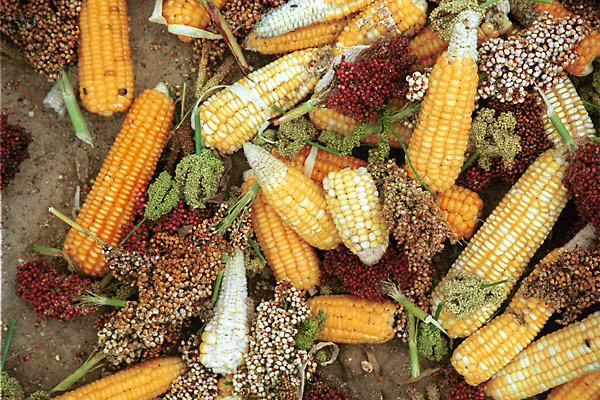
A proposal by the ministry of Agriculture to push millers to blend maize flour with other local nutritious grains such as sorghum, millet and cassava will ensure sufficient production of food as well as promote production and commercialisation of the local grains to improve famers’ earnings.
Maize consumption is estimated at 98 kilograms per person per year, which translates to roughly 30 to 34 million bags (2.7 to 3.1 million metric tonnes) per year, according to Tegemeo Institute of Agricultural Policy And Development 2016 research.
“Kenya produces about 40 million 90kg bags of maize per year but in case of drought or any other natural challenges, this can lead to low production that cannot match our consumption rate causing shortage,” said Dr Grace Chirchir, the deputy director of Agriculture in charge of agribusiness and value addition.
“The policy will also demand that millers develop formulations based on sorghum, millet, cassava and maize flour blends to improve consumers’ nutritional value by enhancing dietary diversity, and ease pressure from reliance on maize.”
RELATED STORY: Farmer boosts maize nutrition with soy beans
This is in line with the 2012 World Declaration on Nutrition which Kenya endorsed by passing mandatory food fortification legislation, meant to reduce prevalence of vitamin and mineral deficiencies.
“Food and nutrition security is an important pillar in the realisation of the Big Four Agenda. Blended maize flour enhances both food and nutrition security,” said Chirchir.
Kenya’s fight against malnutrition received 4.36bn shillings boost in European Union-funded food fortification projects meant to ensure essential ingredients are contained in the staple food items.
The campaign saw the Kenya Bureau of Standards issue a directive to manufacturers to fortify maize and wheat flours with vitamin A, iron, zinc and folic acid as a prerequisite to renewing their certificate of compliance.
RELATED STORY: Naivasha Flower Farm establishes nutrition garden to supplement staff feeding
The ministry estimates that the blending will reduce maize flour consumption from about 30 million bags per year to about 20 million bags over the same period and the surplus will be used for export.
In addition, farmers from other regions where production of the other crops is practiced will also benefit by improving their income as the crops which are mostly grown far subsistence purposes will be roped into the national food chain.
Among the regions that will benefit under this policy are lower eastern that produces millet and cassava, Nyanza which is known for sorghum and western Kenya that thrives in cassava farming.
RELATED STORY: Experts: Learn lessons from success to beat malnutrition in Africa
“We are encouraging millers to sub-contact some of the farmers to grow the alternative crops to ensure that they (millers) have supply of the crops throughout the year.”
















Comments powered by CComment